Abstract 3/2014
Table of content
Wojciech Bąkowski – Methodology of research on market segments influence on the public transport demand – frame model
Aleksandra Ciastoń-Ciulkin, Katarzyna Nosal – Hierarchization of criterions on choice of the transport mode on the example of Cracow
Michał Wolański, Bartosz Jakubowski – Method and design of an Integrated-Hierarchical Information Integration study for transport service quality features’ valuation
Andrzej Krych, Jeremi Rychlewski – Role of buchanan’s road network grid in theory of urban road network optimization
Maria Zych – Proposals of requested stops system in Warsaw implementation alternatives
Abstracts
Wojciech Bąkowski
Methodology of research on market segments influence on the public transport demand – frame model
Abstract: This article presents problem of model dependencies between household income and the peoples’ demand for transport by car and by public transport in the city. It is assumed that the demand for commuting by car or public transport each month depends on the household’s income. There are three assumptions proposed: (1) Household decides on the amount of money assigned for transport costs per month. (2) Assigned amount of money composes price to be paid for transport by public transport or car per month. (3) The city demand is of complete value which may be regarded as maximal. Basing on the household income three groups of people have been defined: those who travel only by car; those who use both: car and public transport and those travelling only by public transport. According to economy guidelines, people from the first group – segment treat transport services as second-rate goods and change in the tariff rates does not affect them. Passengers from the second group, depending on income changes may move to the first or the third group. People from the third group depend on public transport, and any increase nor decrease of price will not change their transport habits. Complete size of transport demand in the city indicates that only people from first and second group may increase use of public transport. Increase of public transport demand may be evoked through change of prices of complementary services for private car drivers. In this case increase of parking prices in the city and pricing an access to some city areas are economic tools reducing use of private cars.
Keywords: passenger transport, collective public transport, transport demand
Aleksandra Ciastoń-Ciulkin, Katarzyna Nosal
Hierarchization of criterions on choice of the transport mode on the example of Cracow
Abstract: The article presents hierarchization of criterions influencing choice of public or private transport in Cracow. Besides it includes presentation of the quality characteristics of public transport which might influence car users to choose public transport. Researches have been carried out on sample of 522 private transport users and 629 public transport passengers between October and November 2012. In the article the analysis of the results was based on the percentage of the highest indications and study of concordance of respondents opinions carries out with use of the Kendall’s W (Kendall’s coefficient of concordance). This – besides structuring hierarchy of factors importance influencing choice of specific transport modes – also enabled to compare importance of particular quality characteristics in reference to selection of public transport by present and future passengers.
Keywords: researches on transport behavior, preferences researches, public transport, individual transport, Kendall’s W
Michał Wolański, Bartosz Jakubowski
Method and design of an Integrated-Hierarchical Information Integration study for transport service quality features’ valuation
Abstract: The paper describes an Integrated-Hierarchical Information Integration (I-HII) modeling method. This is the only approach, effectively allowing to include over a dozen different quality attributes in a transport mode choice model. The paper includes also results of the authors’ own research on aggregating quality attributes, conducted in order to design I-HII interview scenarios. The I-HII method bases on stated choice modeling input data, whereas different quality attributes are grouped (aggregated). In a single choice situation one group of attributes is presented in a disaggregated way, and all the other groups – in an aggregated form. This allows to overcome interviewees’ perception limits that occur, when over a dozen of quality attributes is presented at one time. The quality attributes’ choice and grouping shouldn’t be done arbitrarily by researches, but should result from interviewees’ perception. Therefore it should be determined for each research project empirically. For the research 265 interviewees in the SKM Trójmiasto trains have been conducted. This helped to limit the initial list of 34 quality attributes to three groups of three-four attributes. Price should be a separate stand-alone attribute.
Keywords: transport services quality, passengers preferences, Integrated-Hierarchical Information Integration modeling method
Andrzej Krych, Jeremi Rychlewski
Role of buchanan’s road network grid in theory of urban road network optimization
Abstract: The article discusses basis thesis formulated in the second part of a paper “The Buchanan Report 50 years on”, published in proceedings of IX Conference on “Transportation problems in cities burdened with motor traffic congestion”. An analysis was made on practical tendencies and theoretical searches for a theory of an urban road network’s optimisation, appearing during the past half century. The Report’s thesis on the road network’s structure was used as a benchmark for the analysis – a set of main streets was described as a Buchanan’s network. The Report’s ideas were formed into a set of six basic rules of an optimal network design, allowing Authors to use these rules for an analysis of theoretical and empirical traffic developments. Concerning the optimisation problem, Steenbrinck’s approach was followed, extracting a question of optimal road network architecture from a problem of an optimal management of the network’s effectiveness. A tendency of an isomorphic convergence of the optimal road network for both: traffic management and protection of city environment described by Buchanan, has been found. The outcome was strengthened by simulation experiments done for a road network of Poznań, the network being close to an optimal grid shape. It was proven, that an optimisation problem is coherent with theoretical and simulation searches dealing with the Braess paradox for networks oversaturated or during a saturation process. Effectiveness of a Buchanan’s network presented a problem of a goal function – maximisation of transport capacity of a network being saturated and it’s connection with dynamic traffic management. The problem generally caused by a compatibility deficiency between a demand model (OD-Matrix) and the traffic flow theory has been presented. The optimisation hypothesis was strengthened by results of a research on Macroscopic and Network Fundamental Diagrams (MFD, NFD).
Keywords: urban planning, city environment protection, optimisation of transport networks, congestion, traffic management, ITS
Maria Zych
Proposals of requested stops system in Warsaw implementation alternatives
Abstract: This article is the next one in a papers series on implementation of conditional bus stops system (SPNŻ) submission, staged for Warsaw (or any other exemplary city). Previous articles referred mainly opinions by passengers and drivers of Warsaw’s public transportation system about the idea, as well as research on a phenomenon of redundant STOP button pressing, altogether with an analysis of a pattern city for Warsaw. This time three alternative options of SPNŻ implementation are briefly presented: First option – peripheral SPNŻ: defines all downtown bus stops as permanent ones, whereas the rest of them (lying outside of the innermost core of the city) as conditional ones. Presumptive extension of this version of SPNŻ allows existence of permanent bus stops in so called ‘district hubs’. Second option – dispersed SPNŻ: in reality it is just an intensification of ongoing actions, aiming at increasing the amount of conditional bus stops. This version is the simplest in terms of implementing, but its benefits assumed to be of little importance. Third option – full SPNŻ: introduces the utmost changes in city network operation. Its main goal is a total transformation of permanent bus stops into conditional ones, excluding terminuses only. Its benefits are estimated the highest, as well as its implementation difficulty. In conclusion, a brief listing of advantages and drawbacks of each option is presented, as well as the pros and cons of the main idea itself.
Keywords: requested bus stops, urban bus transport, public transport

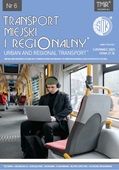 SITK
SITK 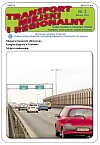 SITK RP
SITK RP 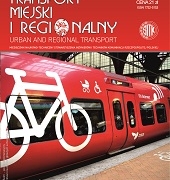 SITK RP
SITK RP 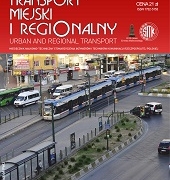
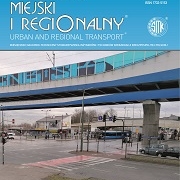 SITK
SITK 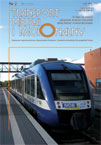 SITK RP
SITK RP 
 SITK RP
SITK RP SITK RP
SITK RP